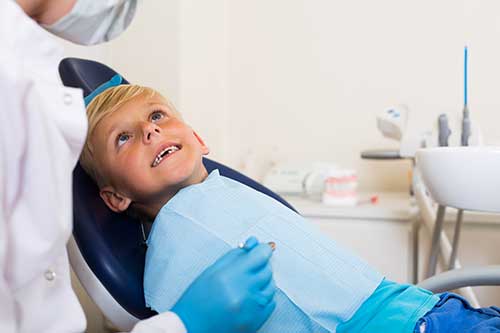Not known Facts About Legacy Orthodontics
Not known Facts About Legacy Orthodontics
Blog Article
The Facts About Legacy Orthodontics Revealed
Table of ContentsGetting The Legacy Orthodontics To WorkThe 3-Minute Rule for Legacy OrthodonticsThe Basic Principles Of Legacy Orthodontics Not known Details About Legacy Orthodontics The Buzz on Legacy Orthodontics
At Advanced Orthodontics, we offer people with a alternative therapy experience. Additionally, we supply adjustable therapy timetables, adaptable payment options and a fun, satisfying experience. clear braces. Telephone call ( 480) 357-4900 today to learn more and routine a consultation.An orthodontist is a dentist trained to diagnose, stop, and deal with teeth and jaw abnormalities. Orthodontists function with individuals of all ages, from children to adults.
Malocclusion, or misaligned teeth, can bring about oral issues, including tooth decay, periodontal disease, and challenging or excruciating eating. Not every person is birthed with straight teeth. If you have a bad bite or large rooms between your teeth, you may wish to seek advice from a dental expert specializing in orthodontic care.
Some Ideas on Legacy Orthodontics You Should Know
( Picture Credit Scores: DigitalVision/Getty Images) Orthodontists use dealt with and removable oral gadgets, like dental braces, retainers, and bands, to alter the setting of teeth in your mouth. Orthodontic treatment is for dental problems, consisting of: Jagged teethBite problems, like an overbite or an underbiteCrowded teeth or teeth that are too far apartJaw misalignmentThe goal of orthodontic treatment is to enhance your bite.
While you might think of orthodontists as mostly for children or teenagers that require braces, they can remedy dental issues at any age. Orthodontists go to college, dental college, and orthodontic college.
, but not all dental practitioners are orthodontists. They concentrate on two locations: Just how to effectively and securely move teeth How to properly assist advancement in the teeth, jaw, and faceOnce an orthodontist has completed training, they have the alternative to come to be board certified.
Getting My Legacy Orthodontics To Work
Misalignment, or malocclusion, is the most common factor people see an orthodontist. It is hereditary and is the result of size differences in between the upper and reduced jaw or between the jaw and teeth. Malocclusion causes tooth overcrowding, a misshapen jaw, or uneven bite patterns. Malocclusion is typically treated with: Your orthodontist affixes metal, ceramic, or plastic square bonds to your teeth.
If you have only small malocclusion, you might be able to utilize clear braces, called aligners, rather than standard braces (https://trello.com/u/legacyortho). Some people require a headgear to help move teeth into line with pressure from outside the mouth. After braces or aligners, you'll need to use a retainer. A retainer is a customized tool that maintains your teeth in position.
They can produce added room in the mouth without having to draw teeth. Orthodontists use wires, surgical screws, or plates to sustain your jaw bone.
You might require to see an orthodontist if you have: Crowding or not enough room for every one of your teethOverbite, when your top teeth come your bottom teethUnderbite, when your bottom teeth are also much forwardSpacing or problems with gapsCrossbite, which is when your top teeth fit behind your bottom teeth when your mouth is closedOpen bite or an upright void between your front bottom and top teethMisplaced midline, when the facility of your base and top teeth do not align Dealing with an oral malocclusion can: Make biting, eating, and speaking easierImprove the symmetry of our face and your total appearanceEase discomfort from temporomandibular joint problemsDifferent your teeth and make them easier to cleanse, helping prevent tooth decay or cavities It's frequently a dental practitioner that first notifications misaligned teeth throughout a regular exam.
How Legacy Orthodontics can Save You Time, Stress, and Money.

Throughout your initial orthodontic assessment, you'll likely have: An oral examPhotos taken of your face and smileDental X-raysPanoramic (360 level) X-rays of your face and headImpressions to produce molds of your teethThese website here examinations will certainly help your orthodontist understand just how to wage your treatment. braces. An orthodontist is a dentist who's had training to treat your teeth and jaw
An orthodontist is concentrated on your bite, so something like a damaged tooth would be managed by a dental professional. Orthodontists are focused on your bite, or the means your teeth fit together, and the straightness of your teeth.
Ever questioned how celebs always seem to have flawlessly lined up teeth? The solution usually hinges on the experienced hands of an orthodontist. What specifically does an orthodontist do? Orthodontists are dental experts who concentrate on fixing irregularities in the teeth and jaws. Their proficiency exceeds simply developing an attractive smile; it encompasses enhancing your total dental health and wellness and function.
The 8-Second Trick For Legacy Orthodontics

, orthodontists have a diverse toolkit at their disposal. These reliable dental braces utilize a system of braces bonded to the teeth and connected by cords.
These removable trays are customized to considerably move the teeth's placement. In situations of slim jaws, palatal expanders can be used to create space for correct tooth alignment.
Report this page